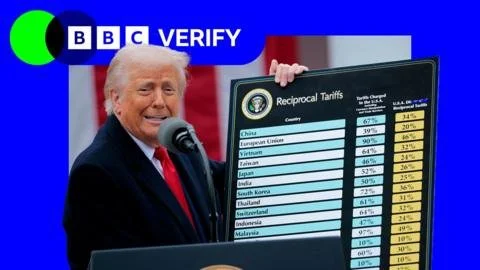The Tariff Tidal Wave: Can Trump's Trade Policies Deliver Economic Balance?
Donald Trump’s trade policies have brought significant shifts to the global trading system since his return to office. On April 2, 2025, known as Liberation Day, he announced a series of high reciprocal tariffs, effectively raising import taxes on many nations. These tariffs have led to a record average tariff rate of 18.2%, the highest it’s been since 1934, significantly up from 2.4% the previous year.
As a result, the US government’s tariff revenues have surged. In June 2025, the tariff earnings reached $28 billion, tripling the figures from the previous year. The Congressional Budget Office (CBO) estimated that these tariffs will reduce US government borrowing by $2.5 trillion over the next decade. However, this increase in revenue comes at the cost of suppressing the overall US economy, which economists predict will suffer due to these tariffs.
Despite Trump’s goal to reduce the trade deficit, actual figures reveal that the US goods trade deficit reached a staggering $162 billion in March 2025. This was attributed to stockpiling by US companies before the tariffs took effect, leading to increased imports while exports showed only modest gains. The tariffs, particularly those imposed on China, have also had significant implications: exports from China to the US declined by 11% in the first half of 2025 compared to the same period in 2024.
Countries have begun to react to these policies by seeking to forge stronger trade relationships elsewhere. The UK and India successfully signed a trade deal, and Norway, Switzerland, and Iceland engaged with Latin America under a new trade agreement. Moreover, as countries adjust to the fracturing relationship between the US and China, China has pivoted towards sourcing soybeans from Brazil, dramatically reducing imports from the US.
Furthermore, these tariffs are expected to increase consumer prices in the US, with a noted rise in costs for items such as appliances, computers, and toys. These shifts could contribute to inflation, which was recorded at 2.7% in June, suggesting that consumers may soon feel the financial impact of these trade policies firsthand. Research from Harvard University noted that prices for imported and domestically affected goods are rising faster than those that are not subjected to tariffs, indicating a growing burden on American consumers.
Overall, while Trump’s tariffs aim to protect and balance international trade, the ramifications on imports, exports, and consumer prices highlight the complexities and potential economic challenges that lie ahead.

